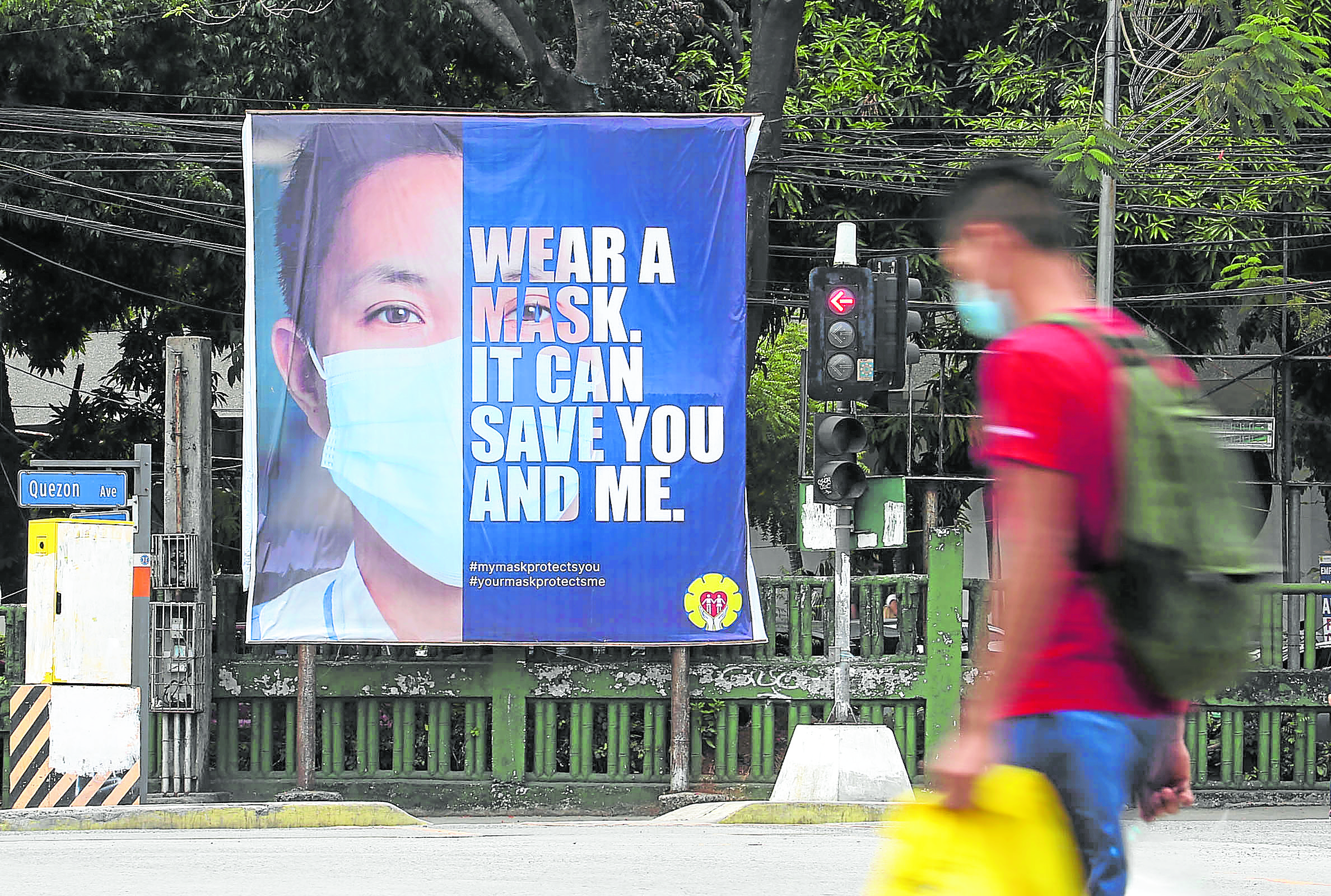
MASK UP A tarpaulin reminding the public to wear face masks is installed at the busy corner of Quezon Avenue and Agham Road in Quezon City. INQUIRER file photo / NIÑO JESUS ORBETA
MANILA, Philippines — The National Capital Region (NCR) is now classified as being low risk for COVID-19 in terms of case trend and data. However, four other regions are now tagged as high risk, the Department of Health (DOH) said Wednesday.
Data presented by Dr. Alethea De Guzman, OIC-Director of the DOH’s Epidemiology Bureau during an online media forum showed that Caraga, Western Visayas, Davao Region, and Soccsksargen are currently at a high-risk COVID-19 case trend.
“We are now classifying four areas as high risk in terms of their case data and trend. These are Caraga, Regions 6, 11, and 12, all coming from the Visayas and Mindanao region,” she said.
“Para sa NCR, siya ay naclassify na ngayon natin at low risk dahil nagpakita siya ng pagbaba ng kaso by 23 percent in the last two weeks at ang kanyang ADAR (average daily attack rate) ay nasa 5.7 na lamang,” she explained.
(The National Capital Region is now classified as low risk because it showed a decrease in cases by 23 percent in the last two weeks and its ADAR is only at 5.7 per 100,000 population.)
According to De Guzman, the average daily new COVID-19 cases in Metro Manila is 685 from June 16 to 22, lower than the 825 average cases from June 9 to 15, and the 949 cases from June 2 to 8.
Metro Manila had its peak of new COVID-19 cases from March 29 to April 4 with an average of 5,534 daily new cases.
De Guzman said the “case trend in NCR is exhibiting a slow decline after a plateau.”
However, ADAR remains at high risk for Pateros, Makati, San Juan, Pasig, Pasay, and Las Piñas, while ICU utilization is at critical risk in Makati and high risk in Las Piñas.
Meanwhile, the increase in cases in the past two weeks was 27 percent in Caraga, 41 percent in Western Visayas, 53 percent in Davao Region, and 33 percent in Soccsksargen.
On a nationwide scale, COVID-19 numbers are showing a “plateauing trend” but there are signs of a slow increase, according to De Guzman.
The average number of daily reported cases nationwide is 5,790 from June 16 to 22, lower than the 6,678 cases from June 9 to 15.
The country recorded its peak of COVID-19 cases from April 9 to 15 with 10,845 average daily cases.
As of Tuesday, the country has 52,696 active COVID-19 cases, including 3,666 new infections. The DOH, however, explained that the low case count might not be due to an actual lowering of cases but due to the low turnout of tests from laboratories since Sunday.